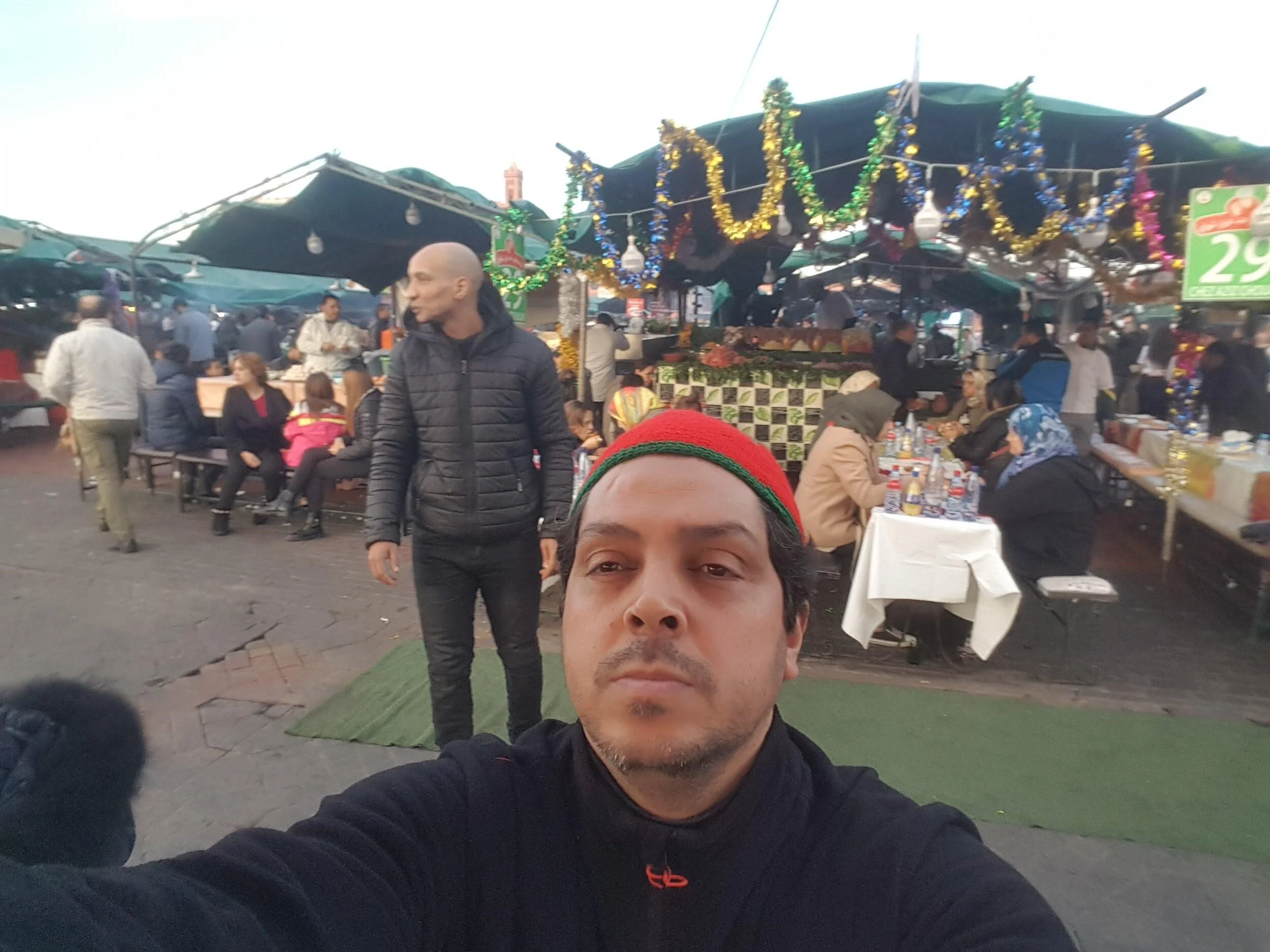"Being Amazigh" by Amina El Houdaigi
Amazigh people are the indigenous people of Morocco and North Africa. There are many studies about the origins of Amazigh, but the most important thing is that they are the first people who lived in the valleys and mountains of Morocco specifically, and all-over North Africa as a whole.
Amazigh language was resilient to all historical changes in Morocco from the Phoenicians, Romans and through all the Muslim dynasties who ruled Morocco. This language has its own alphabet called Tifinagh. However, most of its cultural legacy is a well-kept spoken heritage, demonstrated in both art and literature.
“The common point of this language and culture is its commitment to exist and flourish in every country thanks to its speakers as well as supporters.”
The word Amazigh means ‘the free man’. This meaning explains why the Amazigh lived in peace with all the dynasties in Morocco since the Phoenician era. Amazigh people are peaceful and proved that they can co-exist side by side with many cultures and ethnic groups. However, they also proved that they are real warriors when it comes to defending their own land and culture against any enemies or invasions.
Before Islam, Amazigh had no religion, they worshiped different gods like the sun and others, but when Islam arrived in Morocco in 681, Amazigh started converting to Islam as their way of openness to all peaceful missions that crossed Morocco. Some Amazigh chose to be Jewish or Christian as well. Idriss I, the first king of Morocco, was the one who brought Islam to Morocco. Idriss I married an Amazigh queen from a small village near Meknes, her name was Kenza lbarbarya, and her village was named after Moulay Idriss I— Moulay Idriss Zerhoun. The founder of Fez city was their son, Idriss II.
After Idriss, many Amazigh dynasties ruled Morocco, like the Moravids, Moahads, Merinides, and Wattasids. Many achievements were realized in history by each dynasty, they even invaded Spain and controlled most of it for many decades.
The Amazigh culture kept its origins in dress, jewelry, art, and music. The Amazigh always pride themselves on the richness of this culture and tried everything to protect the legacy of the culture and language throughout the years. Nevertheless, the Amazigh language is influenced by the geographical existence of other tribes and ethnicities in Morocco and North Africa. So, the language has multiple varieties in Morocco such as Tamazight, Tasousit, and Tarifit, and the Algerian Amazigh is influenced by Tuareg. And of course, in Egypt the Amazigh were also impacted by the neighboring tribes there. The Amazigh culture is very colorful and creative in fashion and art. It is also innovative in music and poetry.
The common point of this language and culture everywhere is its commitment to exist and flourish in every country thanks to its speakers as well as supporters.
“I was grateful to my family who kept the roots of Amazigh in me; I grew up being proud of this language and culture.”
I personally grew up in an Amazigh family from Souss valley & Agadir city (Agadir countryside pictured above). I acquired the Amazigh language and culture with Arabic at home. Then, I learned Modern Standard Arabic, French, and English at school. This mix of languages and cultures did not mess up my brain, but the opposite. It made me stronger and more open-minded to many other views in the world, not just languages. I travelled a lot throughout Morocco and learned about the other Amazigh varieties in it like Tarifit in Northern Morocco and Tamazight in the Atlas Mountains. My Amazigh language of course is called Tasousit, referring to the region of Sous from where it spread.
The irony of my fascination with all the languages that I have learned is that, while speaking five languages all fluently, after graduation my first job interview was in my mother tongue, the Amazigh language. I joined an international organization where Amazigh is required as a job skill. And there came my mother tongue to save the day and made me win the interview and so I got the job of my dreams two months after graduation with a bachelor’s degree in English.
I was grateful to my family who kept the roots of Amazigh in me; I grew up being proud of this language and culture. And at the same time, I respect all other languages and cultures. For me this is an amazing achievement because the amount of hostility I see amongst ethnicities and minorities in the real or virtual world is very scary. While I just look at these interactions and I think that there is no better language or culture; they are just different.
Amazigh language and culture did not hinder my existence in Morocco or abroad. This language is full of positive vibes, it embraces everyone who loves it, and is very peaceful towards the ones who are far away from it. This is how Amazigh people have lived and will continue to live.
Amina El Houdaigi is a language instructor at Amideast Morocco.






